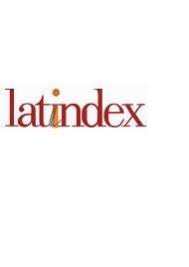Applied econometrics and environmental ethics
DOI:
https://doi.org/10.54571/ajee.675Keywords:
Environmental ethics, Energy consumption, RETINA, Green AI, Eco-RETINAAbstract
The present work explores the relationship between environmental ethics and applied econometrics, focusing on the energy consumption of econometric models training. As an example of good practices, the RETINA algorithm has been programmed in Python following a Green AI approach. Bottlenecks present in the original algorithm have been eliminated, and the ability to measure CO2 emissions during the algorithm's training has been added. Additionally, new functionalities that were not present in the original procedure have been incorporated. This new version has been named Eco-RETINA.
Downloads
References
Barbierato, E., & Gatti, A. (2024). Towards Green AI. A methodological survey of the scientific literature. IEEE Access. DOI: https://doi.org/10.1109/ACCESS.2024.3360705
Brennan, A., & Lo, Y. (2016). Environmental Ethics Stanford Encyclopedia of Philosophy ed EN Zalta.
Castle, J. L., & Hendry, D. F. (2022). Econometrics for modelling climate change. En Oxford Research Encyclopedia of Economics and Finance. DOI: https://doi.org/10.1093/acrefore/9780190625979.013.675
Cochrane, A. (2006). Environmental ethics. Internet encyclopedia of philosophy.
Capilla Romerosa J. M. (2024). Página de GitHub. https://github.com/jcapilla780/Eco-RETINA
GeeksforGeeks. (2023). Environmental Ethics: Types, Importance, Examples. https://www.geeksforgeeks.org/environmental-ethics/
hrokr. (2023). The largest diamond dataset currently on Kaggle. https://www.kaggle.com/datasets/hrokrin/thelargest-diamond-dataset-currely-on-kaggle
Keeble, B. R. (1988). The Brundtland report:‘Our common future’. Medicine and war, 4(1), 17-25. DOI: https://doi.org/10.1080/07488008808408783
Marinucci, M. (2005). RETINA Winpack for real data: A quick guide for automatic model selection. Report, Universidad Complutense de Madrid.
Perez-Amaral, T., Gallo, G. M.,&White, H. (2003).A flexible tool for model building: the relevant transformation of the inputs network approach (RETINA). Oxford Bulletin of Economics and Statistics, 65, 821-838. DOI: https://doi.org/10.1046/j.0305-9049.2003.00096.x
Ranjan, C. (2020). Understanding deep learning: Application in rare event prediction. Imbalanced Learning; Connaissance Publishing: Atlanta, GA, USA, 19-27.
Schmidt,V., Goyal, K., Joshi, A., Feld, B., Conell, L., Laskaris,N., Blank, D.,Wilson, J., Friedler, S.,&Luccioni,
S. (2021). CodeCarbon: Estimate and Track Carbon Emissions from Machine Learning Computing. https://github.com/mlco2/codecarbon. https://doi.org/10.5281/zenodo.4658424
Schwartz, R., Dodge, J., Smith, N. A., & Etzioni, O. (2020). Green ai. Communications of the ACM, 63(12), 54-63. DOI: https://doi.org/10.1145/3381831
Varian, H. R. (2014). Big data: New tricks for econometrics. Journal of economic perspectives, 28(2), 3-28. DOI: https://doi.org/10.1257/jep.28.2.3
Downloads
Published
How to Cite
Issue
Section
License
Copyright (c) 2025 Javier Manuel Capilla Romerosa

This work is licensed under a Creative Commons Attribution-NonCommercial-ShareAlike 4.0 International License.









